A shadow falls across the dazzling colours of male ducks (known as drakes) in midsummer as they lie low in their ‘eclipse’ plumage. Flashes of iridescence become a scruffy mix of dark and buff feathers, while vivid tones are replaced by mottled, spotted and scaled patterns.
Why bother with a dowdy disguise? The answer lies in how ducks moult. Unlike many birds, these wildfowl replace all of their wing feathers at once, so temporarily become flightless and easy prey (sitting ducks, even). Drakes also indulge in some cross-dressing to blend into the background. Females, being mostly brown or grey anyway (to help hide them while sitting on eggs), have no need for any additional camouflage.
It can be tricky to identify moulting ducks, but our guide to the eclipse-plumaged drakes of 12 British species should help. Note that eclipse plumages vary between individual birds.
Drakes are ‘in eclipse’ for several weeks, but as soon as their flight feathers have grown back – usually by October – their bright coloration returns.
Goldeneye (Bucephala clangula)

40–48cm. Eclipse male is similar to female, developing a brown head, but retains traces of white at base of bill.
Mallard (Anas platyrhynchos)

50–60cm. Moulting male resembles female, but has an all-yellow bill and a much more rufous chest.
Gadwall (Anas strepera)
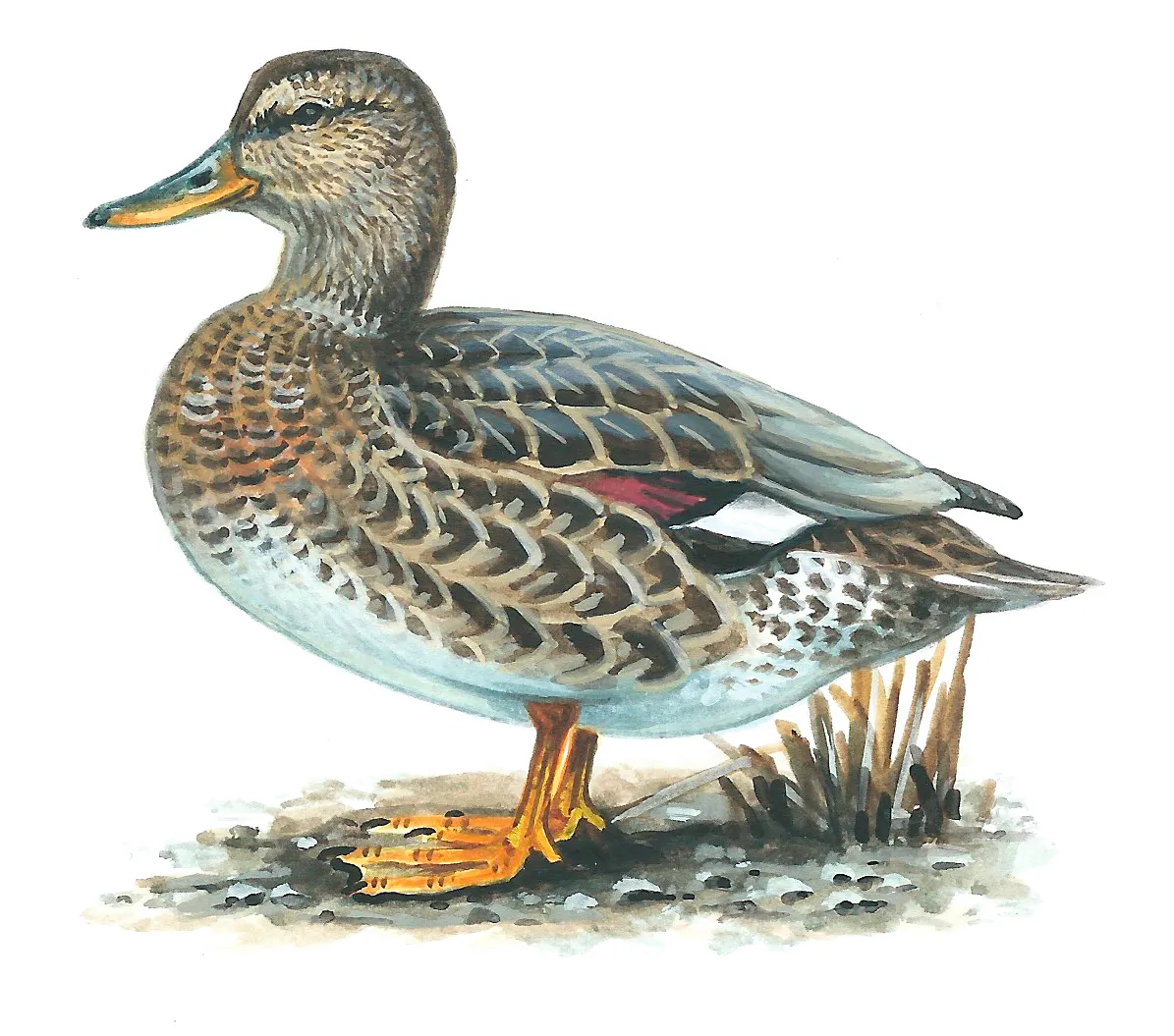
46–56cm. Eclipse male looks like a small, greyish female mallard, but has a white speculum (wing flash).
Garganey (Anas querquedula)
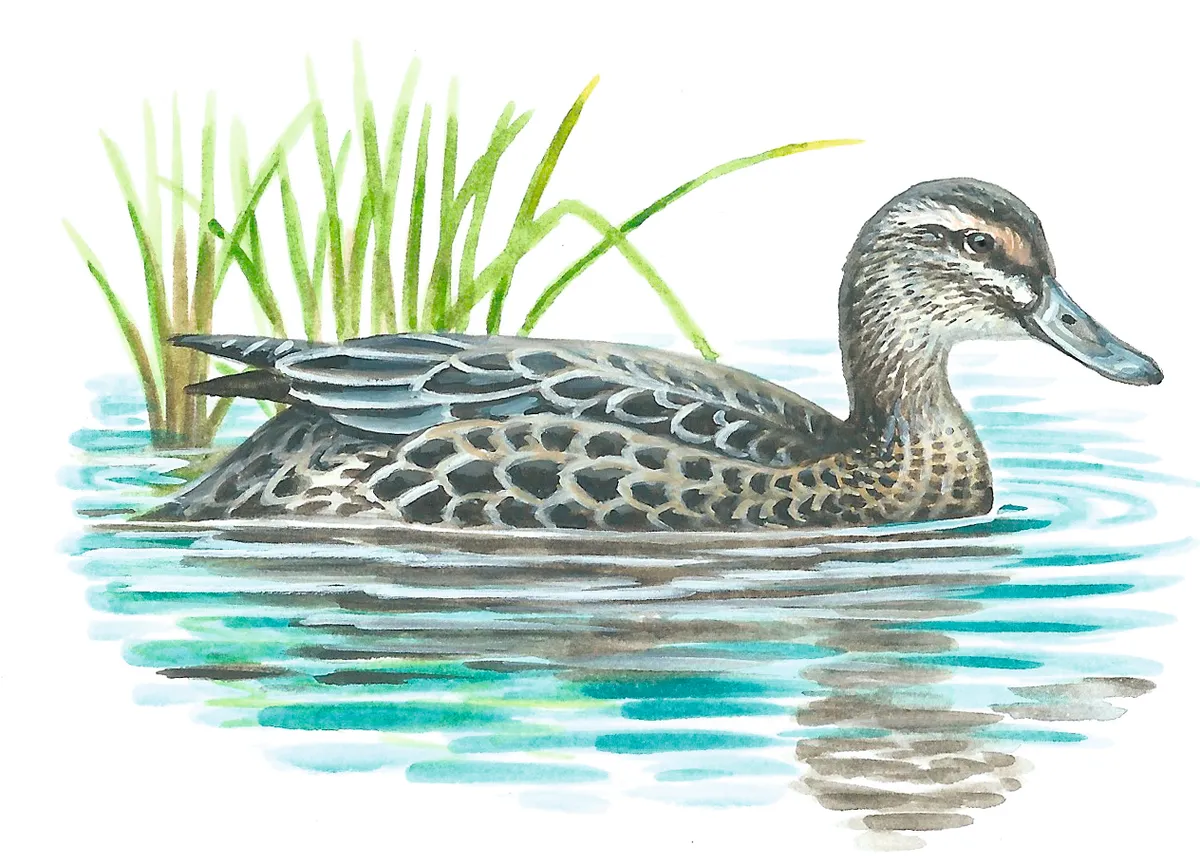
37–41cm. A scarce summer visitor to UK. Eclipse male has a pale throat, dark cheek stripe and all-grey bill.
Teal (Anas crecca)

34–38cm. Easy to identify by its tiny size and green speculum (wing flash). Eclipse male near-identical to female.
Wigeon (Anas penelope)

42–50cm. A white forewing patch and bold chestnut tones separate the moulting male from the female.
Shoveler (Anas clypeata)
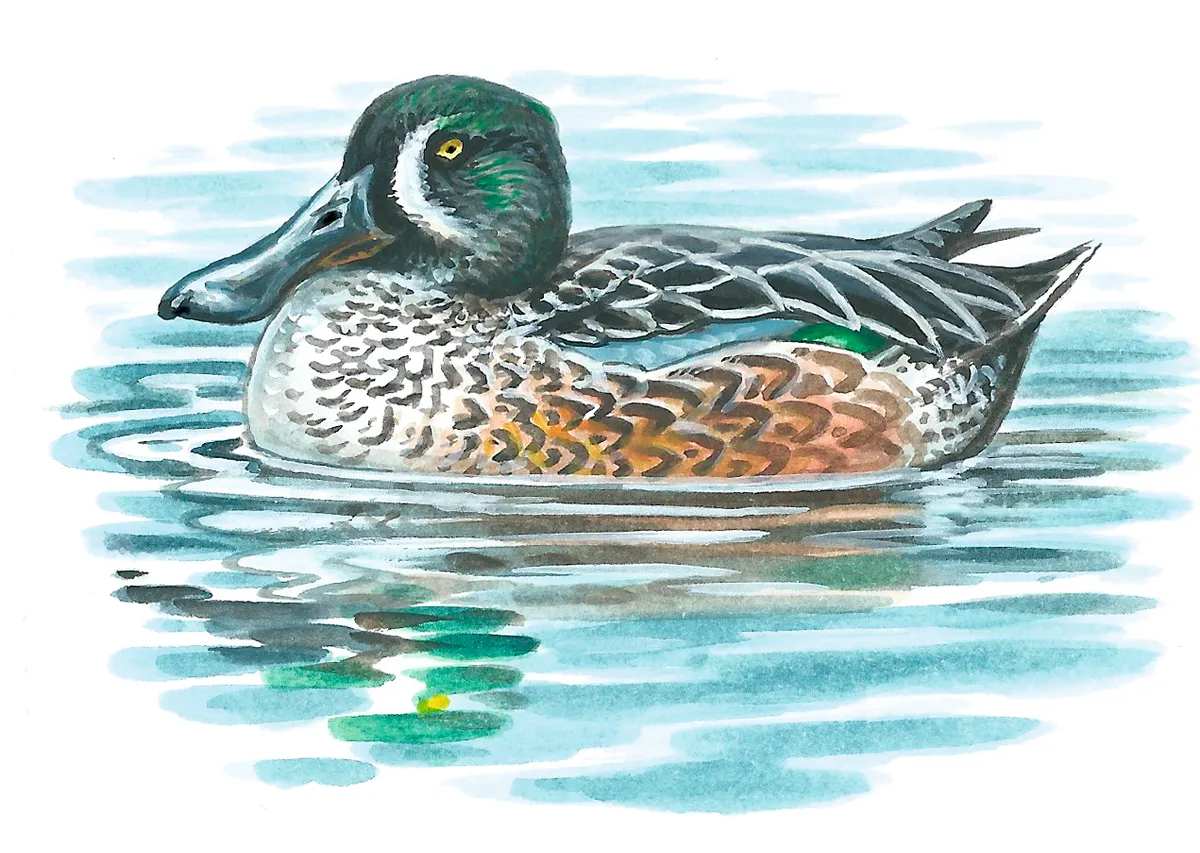
44–52cm. Unique bill confirms this species’ identity in all plumages; in eclipse, male is browner and plainer.
Tufted duck (Aythya fuligula)
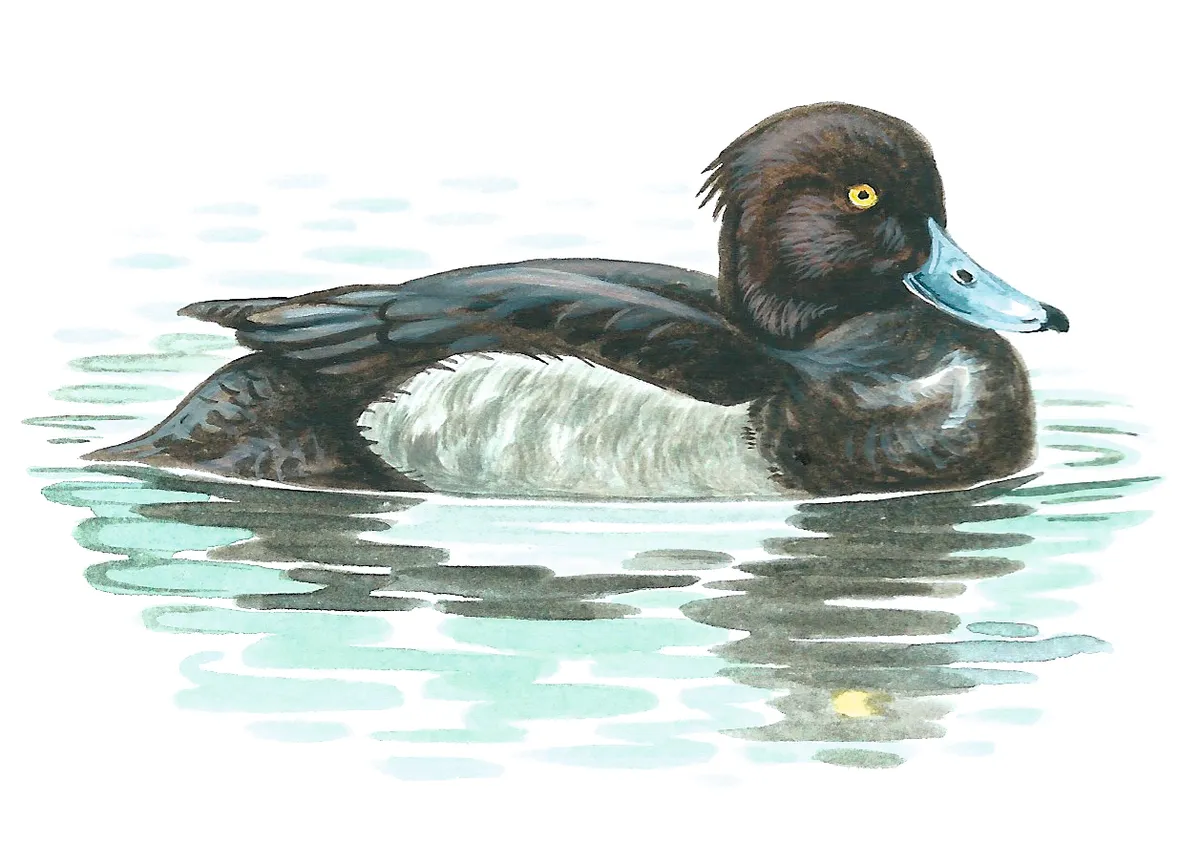
40–47cm. In eclipse, male has just a hint of a crest, with dusky flanks and a brown tinge to black areas.
Pochard (Aythya ferina)
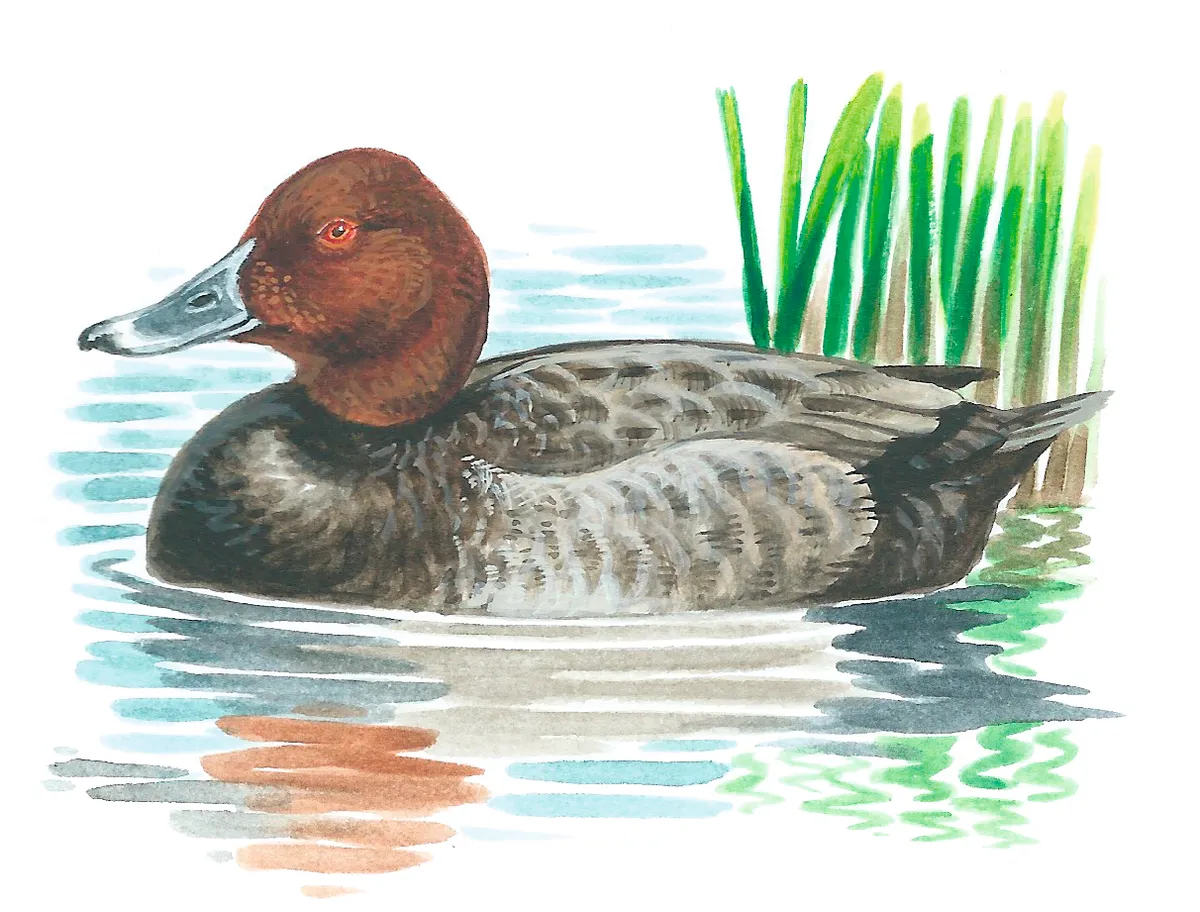
42–49cm. Male becomes drabber during eclipse, with a dull, mottled-grey (not glossy black) breast.
Red-breasted merganser (Mergus serrator)
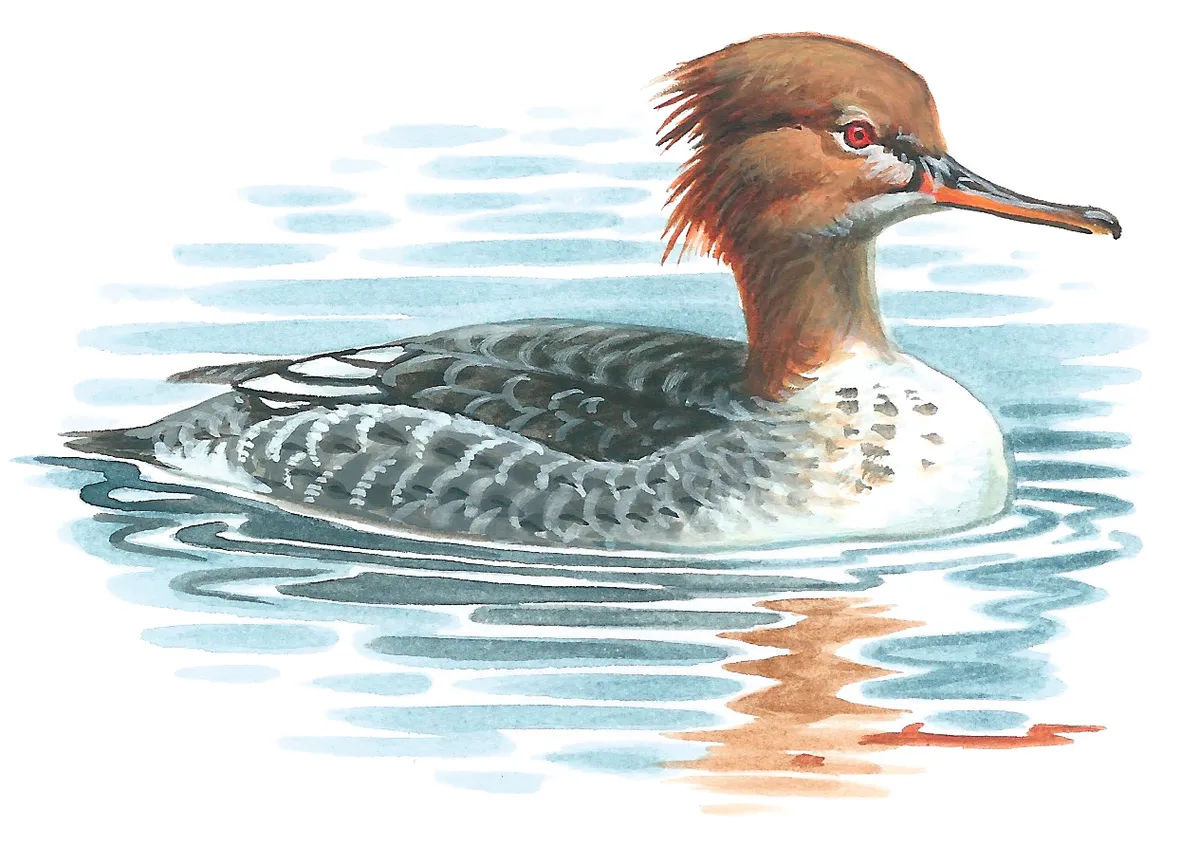
52–58cm. One of two similar ‘sawbill’ ducks in UK; eclipse male looks like female, but with a white wing patch.
Goosander (Mergus merganser)

58–68cm. Larger than merganser, its close relative. White on wing helps separate moulting male from female.
Eider (Somateria mollissima)
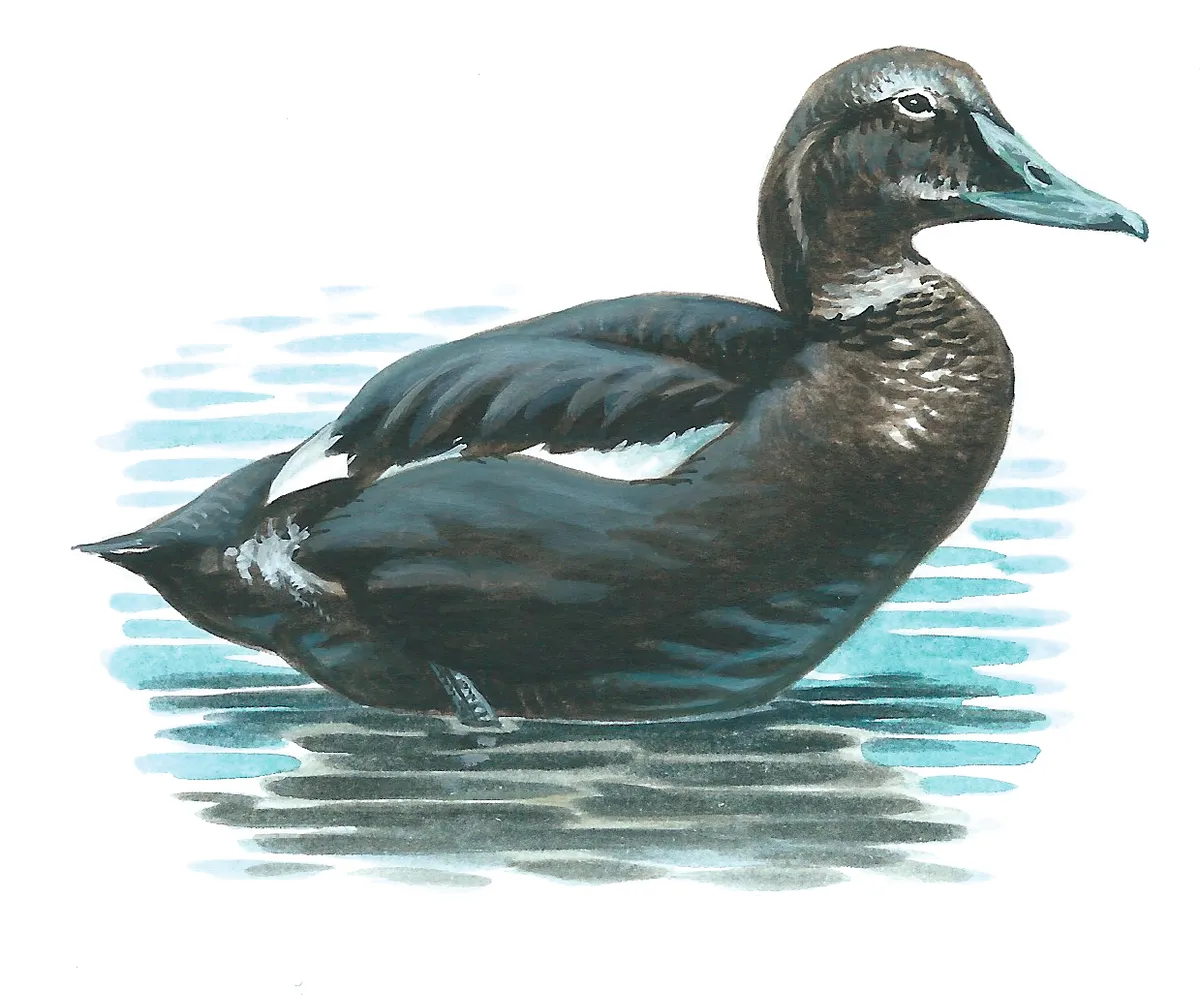
60–70cm. Our largest sea duck. In eclipse, male is dark and mottled, with extensive white on wings.
Main image: A mallard drake in eclipse plumage. © Getty